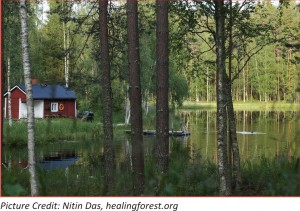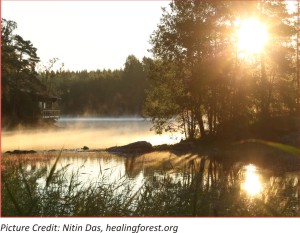Nature Travel in Scandinavia
Conventional
mass tourism and its perils have sparked an awakening across the globe.
Social and environmental impacts of tourism activities for local communities
are largely undesirable – littered surroundings, unregulated construction,
crowds and traffic jams, alienation and under-employment of locals and huge
environmental costs.
The concept of ‘eco’ and ‘responsible tourism’ grew from the undercurrents of the environment movement of the 1970s and 1980s. In the simplest possible terms, it refers to tourism activities that benefit the local community, their heritage and their environment. A chief objective is to contribute to conservation and protection of natural areas. Due to the broad spectrum of activities and actions that can be termed ‘eco’ and ‘green’, ecotourism and its principles have been interpreted openly and vaguely in many instances.
While ecotourism ideally should contribute to protection and conservation of local natural and cultural heritage, there is evidence to show that sometimes the term is just a green-wash. Policies across countries propose different approaches to achieve sustainable and ecologically responsible tourism, but the concept has mixed records on contributing to benefit of the local environment and the local community.
Scandinavia harbours abundant natural resources
and attractions for tourists – glaciers, geysers, fjords, forests and lakes
spread across Sweden, Iceland, Norway, Denmark and Finland. The certified
forms of ecotourism activities in this area are largely idealistic, but the
concept becomes ambiguous in reality since most of the tourism is to
nature-based areas and virtually almost all travel classifies as
eco-tourism. In some Scandinavian countries, it is implied that any tourism
activity in nature essentially has an intrinsic component of learning about
the natural system and culture, thus terming it as ‘ecotourism’.

The Swedish Ecotourism Association, while focussing on nature and culture-based activities, mentions in its marketing agenda the need to develop top-notch experiences for visitors from near and far. It can be fairly argued that the larger goal of sustainability gets defeated when visitors fly in from off places for these ‘eco’ experiences in Sweden. A focus on marketing and promoting the initiative to such as wide audience is a fundamental flaw in the plan by restricting ecotourism to simply an activity of visiting natural areas. Ecotourism in Sweden is also marketed as an extraordinary and unique experience, rather than as a simple, benign and socially beneficial form of tourism. The semantic shift from being an all-benefitting form of tourism to one that benefits the individual, is an issue that all ‘green’ products in the world face.
The Swedish certification system and Europe’s first eco-label, Nature’s Best, has set guidelines for recognising and certifying responsible tours and experiences in natural areas in the country. While it does focus on benefitting the local community and checks for benefits to the local environment, it still comes from a modern, capitalist form of activities as opposed to a community-owned and community-driven initiative.
It thus becomes crucial to have a holistic
approach in what can be classified as ecotourism, and in general for policy
to push for responsibility and sustainability in all forms of tourism
whether it is to nature destinations or not. It is also extremely critical
to encourage local tourism and have aspects of low travel emissions, reduced
consumption, education on local heritage and sensitisation of tourists to
their travel footprint as a part of all ecotourism initiatives.
■
Kavya Arora
karora@devalt.org